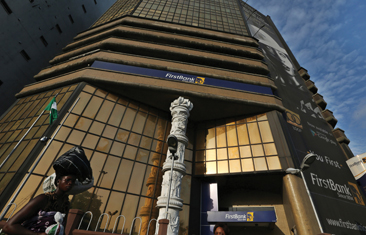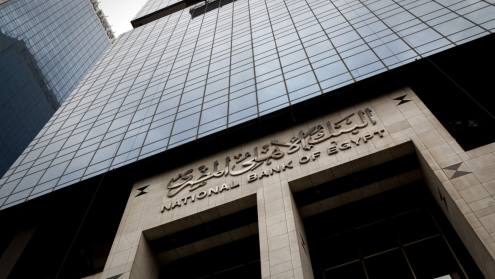The last time Nigeria’s banking sector experienced a crisis, in 2009, the government was forced to intervene to support distressed lenders. With poor risk management frameworks in place, most banks took a hit as the global financial crisis burst the country’s years-long growth bubble. Reforms introduced by the Central Bank of Nigeria in subsequent years have strengthened the sector and left most of Nigeria’s banks in excellent shape.
But it is the country’s largest and most systemically important banks that stand apart. Not only do they surpass regulatory requirements in terms of their capital and liquidity positions, but most have posted strong growth numbers in recent years.
That strength will be important because, although Nigeria’s economy is not yet in crisis, its circumstances are certainly less than favourable. A robust and healthy banking system will be needed if the country is going to get moving again.
More from this report
The country’s oil-dependent economy relies heavily on hydrocarbon sales to generate foreign exchange receipts, and has been hit by the double whammy of low oil prices and the resumption of militant activity in the oil-producing Niger Delta.
This means that not only is Nigeria getting less money for the oil that it produces, but that the country’s total oil production has declined in tandem. “The extent to which militant activity has undermined oil production in Nigeria in 2016 has come as a surprise,” says Abubakar Suleiman, executive director of Lagos-based Sterling Bank.
Recession woes
Ripple effects have been felt throughout the economy. Second-quarter gross domestic product figures confirmed what many market participants already knew: the economy had gone into recession for the first time since 1991.
“Most people expected to see a contraction of economic growth in the second quarter. It was a period when both fuel and foreign exchange shortages really spiked,” says Yvonne Mhango, a sub-Saharan Africa economist with Renaissance Capital, an emerging markets-focused investment bank.
As such, the risks facing Nigeria’s lenders are mounting, even if, for the moment, they remain manageable. Barring a few exceptions – including agriculture and mining – most sectors of the economy have been struggling in an environment characterised by low dollar liquidity and reduced activity in the oil and gas value chain.
“The near-term challenges facing the banking system hinge on macroeconomic uncertainties. [These] uncertainties have heightened the risk environment with implications for asset quality and impairment charges, as evident in most banks’ cost of risk in the first half of the year,” says Ugochukwu Nwaghodoh, group chief finance officer at the United Bank for Africa in Lagos.
Restoring confidence
In June the Central Bank of Nigeria (CBN) abandoned a 16-month-long dollar peg (an effort to stem inflation) in favour of a flexible interbank exchange rate. The move was welcomed by Nigeria’s banks, which have been starved of foreign currency as a result of falling oil receipts and measures taken by the CBN to defend the naira.
A lack of foreign inflows has added to this pressure. Nigeria was ejected from JPMorgan’s influential Emerging Market Bond Index in late 2015 due to complications arising from the country’s dollar peg. This, along with a similar move by Barclays, has contributed to an exodus of US dollars from the country.
But change is afoot. “Since late August we have seen increasing foreign exchange flows entering Nigeria. It will take some time before confidence among investors is fully restored,” says Herbert Wigwe, chief executive of Lagos-based Access Bank.
The authorities are making efforts to reverse this situation, including the CBN’s introduction of a flexible exchange rate as well as the country’s first naira-settled over-the-counter (OTC) foreign exchange futures contracts.
“The OTC foreign exchange market is helping to smooth out genuine demand for foreign currency as it helps to prevent frontloading of foreign currency demand in addition to stemming speculative attacks on the naira,” says Mr Nwaghodoh.
But other barriers to achieving a more liquid foreign currency environment remain. Some observers suggest that restrictions on the banks and on importers are adversely affecting the flow of hard currency into the country.
“There are a number of regulations in place that are impeding the supply of dollars into Nigeria. For instance, stringent net open position limits are in place for Nigerian banks and the import restriction list is still in operation,” says Oyin Anubi, sub-Saharan Africa economist with Bank of America Merrill Lynch.
A controversial policy
In mid-2015, the CBN introduced a list of 41 items on which importers are required to source their foreign exchange needs independently of the banks. The aim of this policy was to stimulate local production of materials or products that could be generated or manufactured domestically.
But the policy has come under fire because of its impact on Nigeria’s private sector, particularly importers and manufacturers. Local and international press reports citing figures from the country’s manufacturing sector have claimed that the policy has resulted in job losses and a reduction in business volumes.
Nevertheless, supportive voices from the banking sector remain.
“The central bank hasn’t banned the import of these products. It merely requires that importers source their foreign exchange autonomously, without turning to the banks,” says Peter Amangbo, chief executive of Zenith Bank. “I think this is sensible because every country must endeavour to stimulate local production.”
Others agree, even though they point out that the exclusion of these items from the official foreign exchange market is in part creating a gap between the official and black market exchange rates for the naira. “It’s true that these items should be sourced or produced domestically. But their exclusion from the interbank foreign exchange market means that they are contributing to a divide between the official and parallel rates for the naira,” says Mr Wigwe.
NPLs on the rise
The switch to a flexible exchange rate, and the naira’s subsequent devaluation, has also had implications for banks with sizeable foreign currency-denominated loans, which account for about 45% of the system’s total, according to data from Renaissance Capital. Most of these are in US dollars and are directed to the oil and gas sector.
According to research from FBNQuest, the investment banking asset management arm of FBN Holdings, parent company of Nigeria’s First Bank, between 40% and 50% of the gross loans of some of Nigeria’s largest banks are denominated in foreign currency. For GTBank, that number is close to 50%, while at the lower end of the scale the country’s biggest lender, Zenith Bank, the figure is just over 40%.
This matters for a number of reasons. First, it increases the probability of a rise in non-performing loans (NPLs) in an already challenging economic climate. As research from Renaissance Capital suggests, businesses dealing with a weaker exchange rate will find it harder to pass on these costs to struggling consumers, leading to weaker margins. In some cases this could lead to businesses closing down, or cost-cutting measures including staff reductions, increasing an already high unemployment rate.
These effects are only likely to play out over the next one to two years. But many banks are already feeling the pinch of a slowing economy. “In terms of the health of the banking sector, there has been a material increase in the number of NPLs but most banks have been very clear about the kind of losses they are taking,” says Mr Suleiman.
The country’s second largest bank by Tier 1 capital, First Bank of Nigeria, is a case in point. NPLs stood at 23% of gross loans as of June 2016, while oil and gas-related files were about 40% of the total.
“Much of the non-performing portion of our loan book was directly related to the poor operating environment faced by our obligors in the oil and gas sectors of the economy,” says Dr Adesola Kazeem Adeduntan, managing director and chief executive of First Bank. “In the past couple of months, as both consumer spending and business investment taper off, we are beginning to see NPL increases at the margins of our loan book.”
Capital positions
But as is the case with all of Nigeria's larger lenders, First Bank has ample provisions in place. The bank had NPL provisions of about 42% in June, according to Moody’s, and it also benefits from a stable deposit-centred funding structure and good liquidity buffers, as demonstrated by the agency’s latest rating of the lender.
“We are proactively managing our NPL portfolio, especially by restructuring and returning them to profitability,” says Mr Adeduntan. “Our dedicated team credit analysts and controllers continue to monitor our assets to ensure that they are performing in line with the approved terms and conditions.”
In addition, the naira devaluation has hit most lenders’ capital positions. While the naira value of Nigerian banks’ dollar loans have been adjusted upwards, their capital positions, which have always been denominated in the local currency, have been eroded. “[The depreciation of the naira] has moderated the capital adequacy ratios of banks, given the attendant nominal increase in risk-weighted assets,” says Mr Nwaghodoh.
As a result, Nigeria’s banks are now focused on risk mitigation. The country’s largest banks are in a better position to face these challenges, as Access Bank, UBA, Zenith Bank and GTBank all have capital adequacy ratios of between 18% and 20%. For smaller or second-tier banks, there is a renewed emphasis on capital raising even though the current environment will make this process difficult.
“Sterling Bank successfully increased its capital position through a Tier 2 [capital] issue which raised just under N5bn [$16.4m] this year as qualifying capital,” says Mr Suleiman.
Diversity drive
As Nigeria’s banks look to the future, some common themes are emerging. For one, most of them are looking to diversify their loan books. This is particularly true for those lenders with significant exposure to the oil and gas sector. About 40% of Diamond Bank’s total loans are geared towards the industry, for example.
In addition, most banks have prioritised tapping into nascent but fast-growing sectors of the economy, such as agriculture. These are seen as solid, domestic opportunities in which significant market share can be developed.
“There is a lot of talk around Nigeria’s agricultural potential. But primary agriculture is just one aspect of this story. Food processing, food preservation and transportation are all associated sectors that offer a massive business supply chain that is ripe for investment,” says Mr Amangbo at Zenith Bank.
Growth in the retail market is another priority for Nigeria’s banks. Not only does this strategy support the goal of financial inclusion, and in turn the formalisation of much of the grey economy, but it also provides banks with a cheap and desperately needed source of funds.
“We continue to prioritise the growth of our retail business and we are increasingly using technology to drive that expansion,” says Access Bank’s Mr Wigwe.
Access Bank’s PayWithCapture banking application, launched in December 2015 and since upgraded to a newer version, has already received more than 1 million downloads. The bank attributed part of its success in the first half of 2016 to customer demand for digital banking and the increasing use of e-channels. Profit before tax reached N50bn over the first two quarters this year, an increase of 28% on 2015.
Optimism prevails
So while the current environment remains deeply challenging, the mood in Lagos is upbeat when it comes to the longer term. Though most bankers understand that efficiency gains will have to be realised and that NPLs will increase, they are quick to point out that the fundamentals underpinning the country’s growth story have not changed and that the crises of recent years seem to be behind them.
“The government is quite supportive of the banking system and if the dollar liquidity situation improves I don’t see another crisis on the horizon,” says Ms Anubi of Bank of America Merrill Lynch.
Over the next few years, Nigeria’s banks are set to play an important role in moving the economy beyond its current woes, in partnership with a government that on the face of it appears to be backing genuine and positive change. But as many bankers recognise, the bond between the private and public sectors will need strengthening to tackle the country’s many challenges head-on.
“We hope to see increased partnership between the public and private sectors, with clear commitment to the private sector now becoming the economy’s growth engine,” says Mr Adeduntan.












